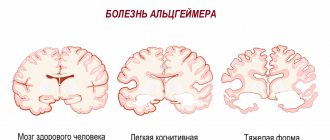If you constantly, for several months, feel an unreasonable loss of strength, debilitating fatigue, which does not go away even after a long rest, you may need the help of a specialist. Chronic fatigue syndrome (CFS) has nothing to do with a natural temporary state of fatigue after strenuous physical or mental work, which disappears after a few hours of rest.
CFS is not a diagnosis that a doctor can make, but a symptom complex that is more often used in popular science literature and in non-medical audiences, sometimes as a description of an unrecognized state of constant weakness and fatigue. In fact, or in most cases, we are talking about neurosis (neurasthenia), which is accompanied by such symptoms. (See article about asthenic neurosis - neurasthenia).
The disease is provoked by the emotional and mental stress of modern megacities, whose residents are most susceptible to chronic fatigue syndrome, deteriorating ecology and lifestyle features. For the most part, the disease affects ambitious young and middle-aged people who are building a career and loading themselves with exorbitant amounts of work and bearing responsibility for its implementation. The percentage of women among those suffering from CFS is higher than that of the stronger sex.
The clinical picture of chronic fatigue syndrome is characterized by its disguise as other pathologies. Only an experienced psychotherapist can differentiate this disease from the symptoms of other diseases.
Symptoms
A specific symptom of CFS is the inability to get rid of a debilitating loss of strength even after reducing stress or taking a long rest in the absence of diseases that could cause such a condition. The patient cannot accurately name the event after which he began to experience constant fatigue, and drug treatment does not help to get out of this state. These are the so-called major criteria for identifying the disease. The remaining symptoms of chronic fatigue (minor criteria) are characteristic of many mental and somatic disorders and pathologies of the body:
- sleep disturbances – excessive drowsiness or insomnia, which is caused by an unreasonable feeling of fear, anxiety that intensifies at night, shallow, intermittent sleep;
- frequent headaches of various types;
- pain of various locations: in muscles, throat, lymph nodes, joints;
- impairment of intelligence (mental activity) - difficulties arise with concentration, memorization, logical constructions, reflection, creative ideas and their implementation;
- changes in the emotional background - short temper, irritability, depression, apathy, hypochondria, phobias;
- muscle weakness;
- aching joints;
- impaired motor activity, hand tremors;
- susceptibility to colds and viral diseases due to decreased immunity;
- violation of body thermoregulation, low-grade fever.
Due to the fact that the clinical picture is characteristic of many diseases, a person suffering from CFS often seeks help from doctors who treat somatic diseases, and in the worst case, self-medicates, taking medications for insomnia, painkillers and sedatives. But medications without psychotherapeutic help are not able to relieve most symptoms, which is another sign of CFS.
Chronic fatigue syndrome in adults
So, how does the disease progress in adults? As a rule, it begins suddenly. Suddenly, in the midst of complete health, but in fact in a state of severe hidden fatigue, a person comes home from work exhausted, literally falling off his feet. After some time, physical and mental activity is restored, but such episodes are repeated more and more often. Then comes headache, including migraine-like, dizziness, forgetfulness, and inability to concentrate. The patient is in a depressed mood; some, on the contrary, develop aggressiveness and may experience episodes of panic. The temperature also rises slightly, pain in the muscles and joints may bother you, and the cervical and axillary lymph nodes may enlarge. Viral diseases are becoming more frequent, including external manifestations of herpes infection (for example, “fever” on the lips).
Typically sleep disturbance. During healthy sleep, the nervous system restores the balance in the functioning of internal organs and systems that was disturbed during wakefulness, processes the information received during the day, without which a person’s rest cannot be complete. Disturbed sleep aggravates an already difficult situation.
Constant fatigue
and other symptoms of the disease can poison the life of a previously successful person for many months and years, causing a radical change in her way of life.
As mentioned above, children are also susceptible to this disease. And their own parents are mostly to blame for this. Successful parents want to see their children even more successful, unsuccessful parents dream of being realized through them. And that's great. But only in that case. If behind their dreams parents do not stop seeing their real children with their own hopes, needs and possibilities. A little man, whose life is scheduled hour by hour between early childhood school, foreign language classes, dancing, visiting exhibitions and theaters, will first be capricious, come to his mother at night, and then may begin to get “colds.” And no specialists to whom a caring mother will show it, no modern medications aimed at restoring the child’s immunity will help until the mother changes her attitude towards the child and begins to love the person she gave birth to, and not the one she sees in dreams.
But I want to warn you: if you find the symptoms described above in yourself or your loved ones, do not rush to make a diagnosis, because other diseases, such as tuberculosis, cancer, and mental pathology, can manifest themselves in a similar way. Therefore, only a doctor can make final conclusions about the cause of the illness after a thorough examination.
Causes
With natural fatigue from mental or physical overstrain, any person can accurately identify the event that led to a temporary loss of strength followed by recovery during a short rest. One of the criteria for diagnosing chronic fatigue syndrome is the patient’s inability to determine the stressful moment at work that caused the disease. This is not surprising, since such a specific event does not exist, and the disease is caused by a combination of factors.
In some cases, the causes of chronic fatigue syndrome lie in almost insurmountable circumstances of life and work that a person is not able to eliminate, but can change his attitude towards them. Most causes of CFS are due to behavioral characteristics and habits that can be overcome if you understand their significance in the negative impact on physical and mental health.
Typically, chronic fatigue syndrome is caused by a combination of several risk factors, including:
- chronic infectious and viral diseases, inflammatory processes that reduce immunity, which weakens the physiological and mental functions of the body;
- long-term psychological disorders: frequent stress, depression, anxiety and fears caused by work or family problems, constant time pressure;
- unhealthy lifestyle: overwork and overexertion at work, lack of sleep, violation of work and rest, eating, alcohol abuse, uncontrolled use of medications, lack of physical activity, insufficient exposure to fresh air;
- unbalanced diet - lack of minerals and vitamins reduces the supply of energy needed by the body, causing loss of strength;
- poor environmental conditions at work or in the region of residence - the body spends a lot of energy on protection from external influences.
Not every person is able to independently recognize and, even more so, eliminate the listed risk factors from their lifestyle, even to the point of changing jobs. Only an experienced psychotherapist can provide effective assistance in identifying the causes of chronic fatigue syndrome and eliminating them.
Take your vitamins!
According to research, most people in our country suffer from hypovitaminosis - a lack of vitamins and microelements. This problem becomes especially acute at the end of winter - beginning of spring, when the supply of vitamins accumulated by the body over the summer and autumn has depleted, and it is difficult to obtain new ones from winter, imported, greenhouse products.
Vitamins are not produced in the human body, with the exception of vitamin D and vitamins synthesized by intestinal bacteria, and therefore must be constantly present in food. Most modern people simply physically do not have the opportunity to eat a varied and healthy diet, and it is unrealistic to obtain many vitamins and microelements from food in the required quantities. Even with the most rational nutrition, the human diet today is “understaffed” with vitamins by 20–30%. The absorption of vitamins from “artificial” preparations is often higher than from regular food. Therefore, it is necessary to take multivitamin preparations regularly.
Not all vitamins taken are absorbed by the human body. It is important what time of day you take vitamin preparations, what is included in their composition, whether the daily norm is divided into several doses, whether they are consumed with food or on an empty stomach. Since a person has always received vitamins from food, it is better to take them with meals, so they are absorbed more fully. Vitamins are better absorbed if the daily dose is divided into several doses; it is better to prescribe the main dose in the first half of the day, since in the evening and at night the metabolism in the body slows down and vitamins are absorbed worse.
The need for certain vitamins depends on the general condition of the body. During periods of illness, stress, depression, increased workload, pregnancy, smoking, alcohol abuse, and taking antibiotics, the need for vitamins increases.
The duration of their continuous use is determined by the doctor, and is usually 1–3 months; it is advisable to repeat the courses 2–4 times a year.
Diagnostics
Identification of signs of CFS and its causes is carried out in the process of collecting anamnesis based on the results of the initial examination of the patient, conversations with him and his relatives. The diagnosis is made based on the presence of a certain combination of major and minor criteria for CFS symptoms. If necessary, to differentiate from other pathologies and disorders of a somatic and mental nature, laboratory and instrumental tests are prescribed: general and biochemical blood tests, ECG, ultrasound, MRI, etc.
Brief conclusions
- Emotional burnout is directly related to work routine or heavy personal obligations.
- It is not officially considered a disease, but the condition is accompanied by many different symptoms.
- The stages of emotional burnout are conventionally divided into 5 stages.
- Burnout can lead to serious health consequences if not diagnosed early.
- For successful correction of the syndrome, it is recommended to contact doctors of integrative anti-aging medicine.
Psychotherapeutic treatment
If you consult a psychotherapist at an early stage of the disease, chronic fatigue syndrome can be overcome without the use of medications. Psychotherapeutic treatment in our Center is aimed at making the patient aware of the reasons for the formation of chronic fatigue syndrome and wanting to change his lifestyle or his attitude towards the current state of affairs at work, in the family and in other areas.
A psychotherapist will help you cope with stressful situations, change priorities in life, increase self-esteem and confidence in your abilities. After all, in avid workaholics, CFS often develops against the background of depression, which is caused by the false impression that they cannot cope with work. Although in fact they simply have taken on too many responsibilities and have an excessive sense of responsibility. Among all the responsibilities, the doctor will help the patient choose those that can be abandoned without harming his career, or change his attitude towards them. This is one of the most difficult moments in the treatment of chronic fatigue syndrome.
To convince the patient to give up stress that requires excessive mental stress, hypnotherapy, auto-training methods, relaxation and other psychotherapy techniques are used. During these sessions, the psychotherapist frees the patient from unreasonable fears and anxiety, depression, and helps restore normal sleep without medications.
Treating fatigue
Let us remind you that every person who works a lot should have proper rest. Constant work without rest exhausts the nervous system. And even if CFS is indeed viral in nature, let us remember that any viral disease primarily affects people with weakened immune systems. And immunity, in turn, depends on the state of your nervous system. Therefore, if you live in the office for 12-14 hours a day and, for example, drink at least six cups of coffee a day, do not delude yourself about the state of your health. Sooner or later a failure will occur, and you will have to spend the remaining energy not on work, but on treatment.
The same applies to a young mother, who now more than ever needs a reasonable approach to herself and rational planning of her day. In any case, it is better to postpone some tasks for a while than to give up a day's rest.
It is basic rest that will help in the early stages of CFS to avoid further development of the disease. If there is not enough time for rest, use trance methods for relaxation (an explanation of the essence of these methods will be given below). Modern psychotechnics will help reduce the harmful effects of stress, for example, the technique of neurolinguistic programming, which allows you to see a traumatic situation as if from the outside, “from the perspective of a fly from the ceiling.” An interested person chooses among Eastern or Western methods the one that suits him best.
If the disease has reached a chronic stage, then rest alone is not enough. For the treatment of CFS
in this case, a whole range of measures will be required:
- Healthy lifestyle: active recreation with moderate physical activity; balanced diet; full sleep.
- Psychotherapeutic methods. Each of us has a genetically embedded “self-healing program” in our body. The task of a qualified specialist is to create conditions for the body that mobilize healing resources. This can happen, for example, in a state of trance. Trance is a common phenomenon of disengagement that we encounter on a daily basis. The pleasure of an interesting performance, an exciting book, favorite music, an orgasm, a woman’s special state after childbirth, or the satisfaction of natural needs are manifestations of natural trance. At the same time, endorphins are released in the brain - protein substances that have a morphine-like effect, that is, for example, they relieve tension, reduce pain and improve mood. A person who does not experience trance states begins to get sick. They are needed like air. Such natural states can be reproduced with the help of a specialist, and then you can learn to induce them yourself. A very good effect in the treatment of CFS is achieved by a combination of trance techniques and professional aromatherapy, as well as some other methods.
- Drug treatment. Some drugs used in the treatment of AIDS that inhibit the development cycle of retroviruses, which include the human “foamy” virus. Small doses of antidepressants for severe patient conditions. Multivitamins in doses 2-3 times higher than the usual daily dose.
- Immune system stimulants.
In conclusion, I would like to repeat a hackneyed but relevant truth: take care of your health and the health of your children, do not neglect rest. Otherwise, your hard-earned money will have to be spent on treatment.
Drug treatment
Due to the fact that the symptoms of chronic fatigue syndrome are often perceived as temporary, which will go away after rest, or as manifestations of somatic diseases, contacting a specialized specialist occurs late. In such cases, psychotherapeutic assistance is not enough, and you have to resort to the use of medications.
In our Center, the most modern drugs are used for drug therapy, the prescription of which is carried out strictly individually, depending on the physiological characteristics and mental state of the patient. Make an appointment or a free initial consultation at the Neopsy Mental Health Center using the specified phone number or through the website services.
Pathogenesis of emotional burnout
From an evolutionary and physiological perspective, humans are adapted to acute stress and respond to it with either flight or fight. This is the hereditary mechanism that has allowed the human species to survive.
The physiological response to stress occurs in three stages:
- Alarm phase.
It implements the hypothalamic-sympathetic-adrenergic axis, which involves the hypothalamus (a region of the brain), the sympathetic nervous system (or activator) and the medullo-adrenal glands.
The sense organs (vision, hearing, smell, touch) perceive the stress factor and transmit information to the limbic system of the brain. The hypothalamus, a specific area of the brain, receives this information and triggers a range of responses that facilitate flight or fight. The first reaction is immediate and follows the path of the autonomic nervous system: it occurs automatically, not consciously.
The so-called sympathetic nervous system, a component of the autonomic nervous system, produces norepinephrine and activates the adrenal medulla (the central parts of the adrenal glands, the glands located above the kidneys), which in turn produce epinephrine and norepinephrine.
These two substances, called catecholamines, increase heart rate, pulmonary ventilation, alertness, sensory acuity (pupil dilation), and blood sugar levels. The muscles tense, and so do the smooth muscle cells of the artery walls, hence the increase in blood pressure.
The whole body is ready to fight or flee almost immediately. Everyone is familiar with the expression “adrenaline rush” and the sensations associated with it.
In addition, norepinephrine activates two other areas of the brain: the amygdala and hippocampus. The amygdala analyzes and evaluates the severity of a situation compared to past experiences. The hippocampus is responsible for remembering experienced events and recording new information.
- Resistance phase.
It concerns the hypothalamic-pituitary-adrenal axis or corticotropic axis, in which the hypothalamus, pituitary gland and cortico-adrenal glands intervene.
If the stressor persists, the hypothalamus activates the pituitary gland by producing corticotropin-releasing hormone or corticoliberin. The pituitary gland, in turn, activates the adrenal cortex, which produces cortisol, also called hydrocortisone.
Cortisol is used to release energy from fats and carbohydrates to keep muscles working. In addition, cortisol, like the drug cortisone, has an anti-inflammatory effect: a person can run very fast or get injured, but does not feel pain at this moment.
Cortisol also tends to travel into the brain and activate the hippocampus, an area of the brain involved in memory and learning. In a physiological situation, the hippocampus slows down the hypothalamus. This is negative feedback control of the stress response.
During the resistance phase, the corticotropic axis remains active, with corticotropic hormone and cortisol levels increasing and remaining high. This phenomenon is called the burning phase.
Corticoliberin has a depressive and anxiety-producing effect, which explains the symptoms of people in a state of chronic stress: depression, anxiety.
Elevated cortisol levels are toxic to the hippocampus, which gradually loses its ability to slow down the hypothalamus and the ability to remember events. This explains the deterioration of immediate memory and learning ability.
In addition, levels of certain neurotransmitters fall in the central nervous system (brain and spinal cord). For example, dopamine (“the hormone of happiness”), associated with attention, initiative, pleasure, and serotonin (“the hormone of well-being”), associated with a feeling of completeness and satisfaction.
- Exhaustion phase.
Under conditions of chronic occupational stress, modern man can neither run nor fight most of the time. He experiences repeated stress, sometimes for long periods of time.
When the burn-out state persists, the adrenal cortex becomes exhausted and cortisol production drops. Hypotension may be a sign of adrenal fatigue.
There comes a point when a person no longer has energy. He is in a situation of physical, mental and emotional exhaustion. He is depressed, deficient in dopamine and serotonin. This phenomenon is called the burnout phase.
The person becomes susceptible to infections. In people with burnout, there is a decrease in the activity of some immune defense cells, natural killer cells, and a decrease in the CD4 + / CD8 + ratio. CD4+ T cells are lymphocytes (white blood cells) that enhance the immune response.
CD8 are suppressor or cytotoxic lymphocytes: they are able to prevent certain reactions and kill abnormal cells. The normal ratio is 2:1. A decreased CD4+/CD8+ ratio suggests abnormal functioning of the immune system with possible immunodeficiency.
Burnout is associated with increased levels of proinflammatory cytokines, chemical mediators of inflammation, and reactive C protein, another marker of inflammation.
VEGF (Vascular Endothelial Growth Factor) increases blood circulation in people with burnout. VEGF causes the formation of new blood vessels (which is unfavorable in cancer) and increases microvascular permeability.
Conversely, the protein BDNF (brain-derived neurotrophic factor) reduces circulating levels. BDNF promotes the survival of existing neurons and the formation of new ones. It is present in the central and peripheral nervous system, with prominent activity in the hippocampus and cerebral cortex. Decreased BDNF levels suggest a decrease in the brain's ability to maintain and repair itself.
How the process develops:
1. At the moment when euphoria appears in the form of “dizziness from success” in work (the project was a success, brought good profits, etc.), a person often strives to work more so that next time it will turn out even better. Sometimes to the detriment of personal life, friendship, and recreation. After all, they do not bring profit and the pleasure from them is too ordinary. The first stage of burnout is also called “falling in love” or “honeymoon”; a person is so passionate about a new job, “fired up” with a new idea, that he cannot think about anything else, talks only about this, puts his whole soul into a new project. During this period, the immune system is mobilized, the person practically does not get sick, and there is a feeling of flight “not walking, but soaring above the ground.”
2. At the second stage, which is called “working” or “lack of fuel,” a person continues to work hard, but he already begins to feel tired, increased fatigue, but for now additional rest helps eliminate it. In the absence of additional motivation and stimulation, the employee’s interest in work begins to decrease. But at the second stage, a person can quickly get himself into a working state, for example, by drinking a cup of strong coffee or tea.
- the muting of emotions begins, the severity of feelings and freshness of experiences is smoothed out;
- the specialist suddenly notices: everything seems to be fine so far, but... it’s boring and empty at heart;
- misunderstandings arise with clients (students, patients), a professional among his colleagues begins to talk about some of them with disdain.
- friends and family are offended that you suddenly began to pay less attention to them.
3. At the third stage of emotional burnout, which is called “exhaustion,” gradual emotional burnout actually occurs if preventive measures are not taken urgently. The person continues to work hard, but now the work no longer brings joy (the enthusiasm that was at the first stage gradually disappears). A person does everything more slowly; the same work takes much more time than at the first stage. Accumulated fatigue dulls emotions, and it becomes almost impossible to get yourself into a working state, for example, with the help of strong coffee or tea. The body requires rest, but even weekends (vacations) are not able to bring a person into working condition, and a feeling of chronic fatigue appears. At the third stage:
- mood deteriorates - a person feels irritable (and this irritation exceeds the reason that caused it) and it becomes more difficult for him to restrain negative feelings when communicating with people, conflict increases;
- positive emotions disappear, some detachment appears in relationships with family members;
- the range of emotional sensations narrows (the so-called flattening of affect), when nothing brings joy or pleasure. As with anesthesia: brightness is lost, emotional dullness is noted;
- hostility begins to gradually manifest itself in the presence of clients (students, patients) - at first it is barely restrained antipathy, and then outbursts of irritation. Such behavior of a professional is an unconscious manifestation of a sense of self-preservation during communication that exceeds a level that is safe for the body;
- out of habit, such a person may still retain external respectability and some aplomb, but his eyes lose the sparkle of interest in anything, and an almost physically tangible coldness of indifference settles in his soul;
- optimism and the desire to make long-term plans disappear;
- ideas about the values of life become dulled, the emotional attitude to the world “flattens”, a person becomes dangerously indifferent to everything, even to his own life;
- relationships with loved ones are deteriorating, and these are not just quarrels, but deep emotional alienation, and, as a result, the space for restoring mental strength is limited. After all, when you were busy with work, you did not feel that you were moving away from your loved ones, and now you have become “distant” for them;
- a state of anxiety and dissatisfaction arises; returning home, more and more often I want to say: “Don’t bother me, leave me alone!”;
- it seems to a person that he is underestimated, he has put his “whole soul” into his work, but does not feel any response, it seems to him that no one notices all his achievements at work, conflicts with colleagues are possible, envy and a sense of rivalry may appear in relation to the successful colleagues. All successes of colleagues are perceived negatively by “upstarts,” and conflicts with management are possible. Thoughts appear: “Isn’t it time to change jobs?” your legs “don’t go to work.” The legs seem to become weak, the former lightness of gait, which was in the first stage, gradually disappears.
- at the third stage, the imbalance between give and take is very acutely felt. In order to maintain both physical and psycho-emotional health, this balance should not be disturbed. How much physical and emotional strength a person puts into work, the same amount should be received back:
- in the form of relaxation , where there are no thoughts about work, but there is a favorite hobby, or some favorite activity: yoga, meditation, massage, gym, bathhouse, meeting with friends, even a computer game, the main thing is that a person can completely relax and take your mind off thoughts about work. Do not forget that with prolonged stress, the muscles are constantly tense and the body needs relaxation to maintain health. One day a week should be completely devoted to yourself (there should be a personal space where you feel comfortable both physically and emotionally);
- in the form of a positive assessment of your work - praise, admiration, just words of support. If you can’t wait for words of support from your colleagues, forget about pride and ask management directly “did they like the way you implemented the latest project, are they satisfied with your work in general.” Remember how a cat behaves when it wants to be petted; it will not leave a person until it receives its portion of positive emotions. Learn from the cat! Believe me, it’s better to ask for a compliment than to live for months with the feeling that you are underestimated, and no one notices your efforts, because you didn’t just work for a salary, but put your whole soul into your work, and you should know how this work is assessed from the outside other. At the same time, do not forget to praise yourself for every small step forward: “I did it! I'm done! I managed! I’m super!!!”, it’s not for nothing that they say: “If you don’t praise yourself, no one will praise you!” You can give yourself a gift, for example, in the form of shopping, a trip to a beauty salon, a trip to nature, to the sea - the main thing is that the emotional response is equal to the emotional effort spent, then the balance between “give and take” can be maintained and emotional burnout will not occur and you can return to the second or even the first stage.
4. If a person at the third stage does not take any preventive measures, the fourth stage of burnout occurs, which is called “crisis” or “devastation”, when stress accumulated over a long period of time manifests itself at the body level - bodily symptoms appear - insomnia, loss of appetite, problems with the heart or stomach, the immune system becomes so weakened that the person constantly feels various ailments. Not only health problems are possible, but also long-term, protracted depression. Often at this stage there is a breakdown in relationships with loved ones, divorce. At the same time, on an emotional level, worries about work become less. Work becomes easier, but any work is done as if mechanically, without a soul, since a person at this stage is already “emotionally burnt out.” A person simply sits at work for the allotted time, strives to leave early if possible, and take sick leave. At the fourth stage, a person does not receive any satisfaction from work, goes to work as if it were hard labor, does not agree to stay even a minute after work (although at the first stage he easily stayed for hours, and even took work home). Here the proverb comes to mind: “From love to hate there is one step” and this step has been taken... There is a desire to urgently change jobs, or better yet “retire” right away. At the fourth stage, a person is not able to show sympathy and understanding towards people, he can only emit these feelings, a feeling of cynicism appears. A person feels a sense of neglect towards clients; at this stage it seems to a specialist that the client himself is to blame for all his problems, and he certainly deserves them. In essence, a person in the helping profession at the fourth stage becomes professionally unsuitable. And then the circle is closed: if you don’t maintain relationships for a long time (with your wife, children, friends, yourself outside of work), they don’t develop. A person is deprived of any space in which he feels comfortable and safe, except for work. But now it is work that becomes the source of negativity: the more work, the deeper and more extensive the devastation.
Filum terminale disease
After the research of Dr. Royo Salvador and his doctoral dissertation (1992), it was found that several diseases whose cause was previously unknown, such as: Arnold Chiari I syndrome, idiopathic Syringomyelia and Scoliosis, Platybasia, Basilar Impression, Axial vertebral tooth displacement, An angular bend at the level of the arch of the atlas is part of a new pathology - Diseases of the filum terminale - and arises for the same reason: tension in the spinal cord and the entire nervous system. The tension force of the entire nervous system during filum terminale disease is present during the formation of all human embryos; to a greater or lesser extent, everyone suffers from its consequences and various forms of manifestation and intensity. The following diseases may be associated with filum terminale disease: intervertebral hernias, some cerebrovascular insufficiency syndromes, facet syndrome, Bostrup syndrome, fibromyalgia, chronic fatigue, nocturnal enuresis, urinary incontinence and acute paraparesis. For accurate diagnosis, selection of treatment and monitoring of a patient with filum terminale disease, the Filum System® method was created.
Dissection of the filum terminale using the Filum Sistem® method
Advantages
1. The tension on the spinal cord caused by a too short or tight filum terminale is eliminated.
2. Using the minimally invasive surgical technique of the Chiari Institute of Barcelona, the surgical time is 45 minutes. Stay in the hospital for about a day. The post-operative period is short and without serious restrictions. No admission to the intensive care unit. No blood transfusion.
3. Its use reduces the risk of mortality to zero. No serious complications.
4. Improves symptoms and stops the development of pathologies associated with filum terminale disease.











